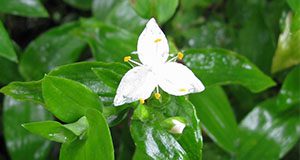Tradescantia fluminensis (small-leaf spiderwort) is a perennial subsucculent herb native to tropical and subtropical regions of Brazil and Argentina. The species has been introduced to the United States and countries in many parts of the world where it is often considered invasive. This seven-page fact sheet describes the small-leaf spiderwort, its taxonomy, geographical distribution, biology and ecology, reproduction and colonization, its impact as a weed in the southeastern United States, and ways of managing the spread of small-leaf spiderwort. Written by Jason C. Setiz and Mark W. Clark and published by the Department of Soil and Water Science.
http://edis.ifas.ufl.edu/ss652
Tag: Department of Soil and Water Sciences
Shiga Toxin-Producing Escherichia coli: Detection, Differentiation, and Implications for Food Safety
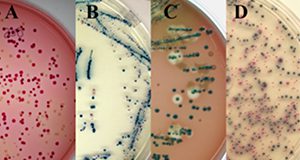
Shiga toxin is a protein found within the genome of a type of virus called a bacteriophage. These bacteriophages can integrate into the genomes of the bacterium E. Coli. Even though most E. coli are benign or even beneficial members of our gut microbial communities, strains carrying Shiga-toxin encoding genes are highly pathogenic in humans and other animals. This six-page fact sheet discusses the two types of Shiga toxins and the best approaches to identifying and determining which Shiga toxin is present. Written by William J. Zaragoza, Max Teplitski, and Clifton K. Fagerquist and published by the Department of Soil and Water Sciences.
http://edis.ifas.ufl.edu/ss654
Florida Biosolids: Rules for Biosolids Classes
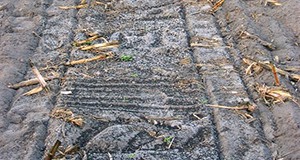 Biosolids are the liquid, semisolid, and solid fractions of the treated waste stream from a domestic waste water treatment facility. This 5-page fact sheet, part of the Florida Biosolids series, provides an overview of biosolids, biosolids classes, pathogen reduction, vector attraction reduction, and metal contaminants, and also discusses the purpose, applicability, and history of Chapter 62-640, Florida Administrative Code. Written by John Hallas, Ann C. Wilkie, and Cheryl L. Mackowiak, and published by the UF Department of Soil and Water Science, December 2015.
Biosolids are the liquid, semisolid, and solid fractions of the treated waste stream from a domestic waste water treatment facility. This 5-page fact sheet, part of the Florida Biosolids series, provides an overview of biosolids, biosolids classes, pathogen reduction, vector attraction reduction, and metal contaminants, and also discusses the purpose, applicability, and history of Chapter 62-640, Florida Administrative Code. Written by John Hallas, Ann C. Wilkie, and Cheryl L. Mackowiak, and published by the UF Department of Soil and Water Science, December 2015.
http://edis.ifas.ufl.edu/ss635
Lowering Soil pH to Optimize Nutrient Management and Crop Production
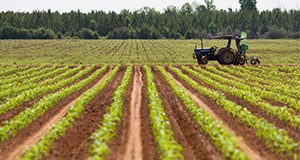
Because temperatures are relatively high and it rains a lot in the region, mineral soils in the southeastern United States tend to be naturally acidic. Managing soils for both pH and nutrients helps maintain soil fertility levels and ensure economic agricultural production. If they are not maintained in the 6.0 to 6.5 pH range, which is best for most crops, most mineral soils in the Southeast will gradually return to their natural acidic state and their fertility levels will drop. In order to keep the soil in the right range, farmers have been encouraged to make routine applications of lime. Calibrated lime requirement tests are part of standard soil tests in this region, but getting the balance right can be tricky. This 4-page fact sheet written by Rao Mylavarapu, George Hochmuth, Cheryl Mackowiak, Alan Wright, and Maria Silevira and published by the Soil and Water Science Department explains the factors that contribute to increased soil pH and describes methods for reducing soil pH that will reduce the chances of either under- or over-liming the soil.
http://edis.ifas.ufl.edu/ss651
Basics of Quantifying N Sources and Fates on the University of Florida Campus
 Landscapes, recreational areas, and sports fields are important parts of the University of Florida campus that receive nitrogen (N) fertilization to maintain the health and quality of their plants. However, nitrogen can be lost from the landscape through runoff in storm water or leaching into groundwater, both fates leading to pollution of the receiving water bodies. Human activities can also cause losses of nitrogen. Therefore, educating people about nitrogen cycling in the urban environment is critical for the development of solutions to the environmental problems caused by nitrogen loss. This 5-page fact sheet discusses nitrogen mass budgets, land uses in a major university, and nitrogen sources and fates associated with different land uses on campus. Written by Jiexuan Luo and George Hochmuth, and published by the UF Department of Soil and Water Science.
Landscapes, recreational areas, and sports fields are important parts of the University of Florida campus that receive nitrogen (N) fertilization to maintain the health and quality of their plants. However, nitrogen can be lost from the landscape through runoff in storm water or leaching into groundwater, both fates leading to pollution of the receiving water bodies. Human activities can also cause losses of nitrogen. Therefore, educating people about nitrogen cycling in the urban environment is critical for the development of solutions to the environmental problems caused by nitrogen loss. This 5-page fact sheet discusses nitrogen mass budgets, land uses in a major university, and nitrogen sources and fates associated with different land uses on campus. Written by Jiexuan Luo and George Hochmuth, and published by the UF Department of Soil and Water Science.
http://edis.ifas.ufl.edu/ss641
Practices to Minimize Flooding Damage to Commercial Vegetable Production

Flooding is a major risk for commercial vegetable production in south Florida, especially in the south Dade County area. Flooding causes oxygen deficiency, or hypoxic stress, causing the plants to produce less energy. This shortage in energy prevents the absorption of nutrients like nitrogen, phosphorous, and potassium. This four-page fact sheet discusses several different management practices for overcoming flood damage, including the use of nitrogen and potassium fertilizers, oxygen fertilizers, growth regulators, and fungicides. Written by Goudong Liu, Yuncong Li, and Xiangju Fu, and published by the Soil and Water Science Department.
http://edis.ifas.ufl.edu/ss425
Contaminants in the Urban Environment: Microplastics
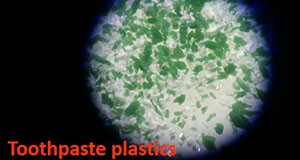
Plastic, plastic everywhere! We live in a world where we are surrounded by plastic: from packaging materials and cutlery to plastic appliances and medical devices. Since the mid-twentieth century, plastic has been a boon to humanity and an integral part of our modern lives. However, plastic debris is a major concern due to its abundance and persistence in the environment. Plastic contaminants not only include plastic debris characterized by large size but also small pieces of plastic in the millimeter size range; these inconspicuous “microplastics” have become a major concern because of their widespread presence in different environments and diverse organisms. This six-page fact sheet discusses the sources of microplastics, their effects on the environment, and ways to minimize microplastics pollution and exposure. Written by Yun-Ya Yang, Ignacio A. Rodriquez, Maia McGuire, and Gurpal S. Toor, and published by the Soil and Water Science Department.
http://edis.ifas.ufl.edu/ss649
What Else Can Surface Water Buffer Systems Do?: Exploring Multiple Ecosystem Services
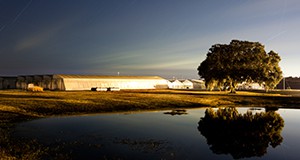 As society confronts the consequences of global warming, deteriorating water quality, and impoverished biodiversity, there is a growing urgency to develop and expand water buffers' multifunctional ecosystem services. However, limited information is available on other potential co-benefits associated with the use of buffers, particularly VFSs. This 5-page fact sheet provides information on buffers' multiple ecosystem benefits, such as niche products production, carbon sequestration, and flood risk mitigation, as well as recommendations on future research needs necessary to enhance multiple ecosystem services and benefits of buffers. Written by Lei Wu, Rafael Muñoz-Carpena, and Yuncong Li, and published by the UF Department of Soil and Water Science, November 2015.
As society confronts the consequences of global warming, deteriorating water quality, and impoverished biodiversity, there is a growing urgency to develop and expand water buffers' multifunctional ecosystem services. However, limited information is available on other potential co-benefits associated with the use of buffers, particularly VFSs. This 5-page fact sheet provides information on buffers' multiple ecosystem benefits, such as niche products production, carbon sequestration, and flood risk mitigation, as well as recommendations on future research needs necessary to enhance multiple ecosystem services and benefits of buffers. Written by Lei Wu, Rafael Muñoz-Carpena, and Yuncong Li, and published by the UF Department of Soil and Water Science, November 2015.
http://edis.ifas.ufl.edu/ss647
Vegetative Filter Strips: A Best Management Practice for Controlling Nonpoint Source Pollution
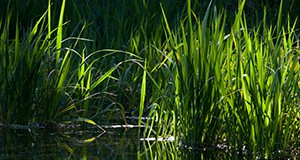 Increasing numbers of pollutants have been observed in natural water systems. As awareness of agricultural sources of water pollution has grown, Best Management Practices (BMPs) have been specifically designed to address agricultural water pollutants and protect water quality. This 4-page fact sheet introduces one of the BMPs, Vegetative Filter Strips (VFSs), which efficiently control nonpoint pollution such as sediments, nutrients, and pesticides. The publication covers primary functions, key design factors, and maintenance of VFSs. Written by Lei Wu, Rafael Muñoz-Carpena, and Yuncong Li, and published by the UF Department of Soil and Water Science, October 2015.
Increasing numbers of pollutants have been observed in natural water systems. As awareness of agricultural sources of water pollution has grown, Best Management Practices (BMPs) have been specifically designed to address agricultural water pollutants and protect water quality. This 4-page fact sheet introduces one of the BMPs, Vegetative Filter Strips (VFSs), which efficiently control nonpoint pollution such as sediments, nutrients, and pesticides. The publication covers primary functions, key design factors, and maintenance of VFSs. Written by Lei Wu, Rafael Muñoz-Carpena, and Yuncong Li, and published by the UF Department of Soil and Water Science, October 2015.
http://edis.ifas.ufl.edu/ss646
Contaminants in the Urban Environment: Bisphenol-A
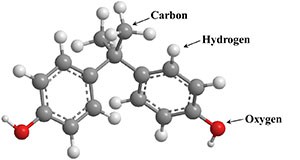
Bisphenol-A (BPA) is a man-made chemical widely used as a component in many products of daily use in households, such as plastic bottles and metallic canned foods. BPA can leach from bottles and cans into the environment, increasing our exposure to BPA. BPA is known to harm exposed animals in laboratory settings as well as in the wild, although its potential to harm humans remains controversial. This seven-page fact sheet will discuss the occurrence, use, and potential harmful effects of BPA and will suggest ways to reduce human and environmental exposure to BPA. Written by Ignacio A. Rodriquez-Jorquera, Yun Ya Yang, and Gurpal S. Toor and published by the Soil and Water Science Department.
http://edis.ifas.ufl.edu/ss648
Understanding Nitrogen Transformations and Cycling for Sweet Corn Production in Sandy Soils
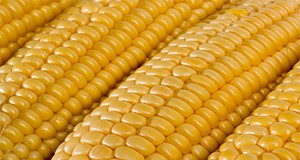 Because sandy soils have low water and nutrient-holding capacities and Florida experiences high rainfall periodically, optimizing fertilizer use efficiency for sweet corn production is challenging. The preparation of nitrogen budgets and the implementation of effective management strategies can help farmers overcome these obstacles. This 4-page fact sheet discusses major concerns which call for nitrogen management in sweet corn production, nitrogen budget preparation and interpretation, and important differences between farm-gate and soil system budgets. Written by Rishi Prasad and George Hochmuth, and published by the UF Department of Soil and Water Science, May 2015.
Because sandy soils have low water and nutrient-holding capacities and Florida experiences high rainfall periodically, optimizing fertilizer use efficiency for sweet corn production is challenging. The preparation of nitrogen budgets and the implementation of effective management strategies can help farmers overcome these obstacles. This 4-page fact sheet discusses major concerns which call for nitrogen management in sweet corn production, nitrogen budget preparation and interpretation, and important differences between farm-gate and soil system budgets. Written by Rishi Prasad and George Hochmuth, and published by the UF Department of Soil and Water Science, May 2015.
http://edis.ifas.ufl.edu/ss643
Sand-Clay Mix in Phosphate Mine Reclamation: Characteristics and Land Use
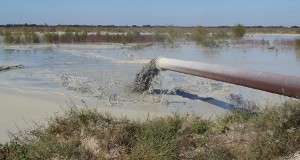
Phosphate rock is a key component in producing fertilizer and many other economically important products. Getting phosphate rock out of the ground produces a by-produce called phosphate clay, which mining operations must return to the landscape. However, phosphate clay retains large amounts of water, making them unsuitable for use as farmland or wildlife habitat. This 6-page fact sheet explains how using a sand-clay mix can more efficiently restore the landscape and put it to beneficial use. Written by Casey Beavers, Edward A. Hanlon, Matt Wilson, James “Bud” Cates, and George J. Hochmuth, and published by the UF Department of Soil and Water Sciences, July 2015.
http://edis.ifas.ufl.edu/ss636
Flatwoods Citrus Best Management Practice: Riser-Board Structures
 Water discharge structures are used to control water table levels and surface water levels in drainage and irrigation ditches within flatwoods citrus groves. The type of structure selected can significantly influence the quality of water discharged. With flashboard risers, water is forced to flow over the top board. This flow path creates a low current area toward the bottom, which facilitates the deposition of sediments and their accompanying nutrients or pesticides, essentially removing them from the discharges. Conversely, screw-gate structures do not create this dead-current zone. Since they open from the bottom, sediments are swept out along with the discharge water. Written by Chris Wilson, Liberta Scotto, Brian Boman, and Tim Gaver. Original publication date February 2002. Revised April 2012 and August 2015.
Water discharge structures are used to control water table levels and surface water levels in drainage and irrigation ditches within flatwoods citrus groves. The type of structure selected can significantly influence the quality of water discharged. With flashboard risers, water is forced to flow over the top board. This flow path creates a low current area toward the bottom, which facilitates the deposition of sediments and their accompanying nutrients or pesticides, essentially removing them from the discharges. Conversely, screw-gate structures do not create this dead-current zone. Since they open from the bottom, sediments are swept out along with the discharge water. Written by Chris Wilson, Liberta Scotto, Brian Boman, and Tim Gaver. Original publication date February 2002. Revised April 2012 and August 2015.
https://edis.ifas.ufl.edu/ss409
Flatwoods Citrus Best Management Practice: Soil Stabilization

This best management practice describes stabilization practices for erosion-prone soils within flatwoods citrus groves. Significant amounts of soil may be deposited in drainage ditches and canals because of the erosion of grove soils. These deposited soils reduce the capacity for holding and transporting water. Plus, very small soil fractions may be suspended in discharge water then settle out in slower flowing areas and destroy submerged aquatic habitats, resulting in the loss of fish, invertebrate, and plant species important for healthy ecosystems. Fortunately, a variety of slope stabilization methods are available. This publication describes considerations for using plants for stabilization, or mulch-like materials. Written by P. Chris Wilson, Liberta Scotto, Brian Boman, and Tim Gaver. Original publication date March 2002. Revised April 2012 and August 2014. Reviewed August 2015.
http://edis.ifas.ufl.edu/ss408
General Recommendations for Fertilization of Turfgrasses on Florida Soils

In many neighborhoods, people envy the individual with the most beautiful lawn and think they cannot grow a lawn of equal quality. That is not necessarily true. A well-maintained lawn only requires some knowledge about fertilization, watering, pest control, and mowing. This publication provides basic information about fertilization. By far, the best approach to a proper fertilization program is to start with a soil test, but, if a soil test is not available, these guidelines can be used for a general turfgrass fertilization program. Original publication date May 1991. Revised August 2013 and August 2015.
http://edis.ifas.ufl.edu/lh014
Contaminantes en el Medio Ambiente Urbano: Los Perfluoroalquilos
 Los perfluoroalquilos–los perfluorocarbonos (PFC) o, en inglés, perfluoroalkyl substances (PFASs)–son los productos químicos artificiales más comunes y persistentes en el planeta. Algunos de los productos más comunes que contienen perfluoroalquilos son sartenes de teflón, utensilios de cocina antiadherente, chaquetas impermeables (como Gore-Tex), espumas de extinción de incendios, envases de alimentos, alfombras y telas para muebles. Los perfluoroalquilos poseen un largo tiempo de residencia en el medio ambiente, lo que significa que los perfluoroalquilos pueden acumularse en los organismos en niveles que causan efectos nocivos.
Los perfluoroalquilos–los perfluorocarbonos (PFC) o, en inglés, perfluoroalkyl substances (PFASs)–son los productos químicos artificiales más comunes y persistentes en el planeta. Algunos de los productos más comunes que contienen perfluoroalquilos son sartenes de teflón, utensilios de cocina antiadherente, chaquetas impermeables (como Gore-Tex), espumas de extinción de incendios, envases de alimentos, alfombras y telas para muebles. Los perfluoroalquilos poseen un largo tiempo de residencia en el medio ambiente, lo que significa que los perfluoroalquilos pueden acumularse en los organismos en niveles que causan efectos nocivos.
This 6-page fact sheet is the Spanish language version of Contaminants in the Urban Environment: Perfluoroalkyl Substances, written by Ignacio A. Rodriguez-Jorquera and Gurpal S. Toor, and published by the UF Department of Soil and Water Science, June 2015.
http://edis.ifas.ufl.edu/ss644
Feature image credit: iStock/Thinkstock.com (non-stick pan, waterproof fabric, and fire fighting foam)/Digital Vision/Thinkstock.com (fast food)
Phytophthora Identification and Sampling in Citrus Nurseries
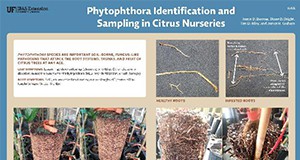
Phytophthora species are important soil-borne, fungus-like pathogens that attack the root systems, trunk, and fruit of citrus trees at any age. The front of this identification sheet includes images of healthy and infested roots and descriptions of leaf and root symptoms. The back lists sampling procedures: soil collection, soil testing, and diagnosing phytophthora. Written by Jamie D. Burrow, Diane B. Bright, Tim D. Riley, and James H. Graham, and published by the UF Department of Soil and Water Science, July 2015.
http://edis.ifas.ufl.edu/ss645
Contaminants in the Urban Environment: Dioxins
 Dioxins are among the most toxic chemicals on the earth. They are by-products of a number of human activities such as combustion of fuels and wastes containing polyvinyl chloride (PVC), chlorine bleaching of paper products, and selected industrial processes. Current releases of dioxins by humans are due to the combustion of fuels and burning of household trash. The good news is that levels of dioxins in the environment have decreased in the United States throughout the past 30 years due to the improved emission controls and regulatory activities. But dioxins break down slowly, so they remain in the environment for a long time and accumulate in the food chain. Long-term exposure to dioxins can harm immune system, nervous system, endocrine system, and reproductive functions. This 7-page fact sheet discusses the sources, emission trends, and impacts of dioxins as well as the ways to minimize exposure to dioxins. Written by Yun-Ya Yang and Gurpal S. Toor, and published by the UF Department of Soil and Water Science, July 2015.
Dioxins are among the most toxic chemicals on the earth. They are by-products of a number of human activities such as combustion of fuels and wastes containing polyvinyl chloride (PVC), chlorine bleaching of paper products, and selected industrial processes. Current releases of dioxins by humans are due to the combustion of fuels and burning of household trash. The good news is that levels of dioxins in the environment have decreased in the United States throughout the past 30 years due to the improved emission controls and regulatory activities. But dioxins break down slowly, so they remain in the environment for a long time and accumulate in the food chain. Long-term exposure to dioxins can harm immune system, nervous system, endocrine system, and reproductive functions. This 7-page fact sheet discusses the sources, emission trends, and impacts of dioxins as well as the ways to minimize exposure to dioxins. Written by Yun-Ya Yang and Gurpal S. Toor, and published by the UF Department of Soil and Water Science, July 2015.
http://edis.ifas.ufl.edu/ss642
Understanding Nitrogen Availability from Applications of Anaerobically Digested Beef-Cattle Manure in Florida Sandy Soil
 Anaerobic digestion of livestock manure is a microbe-mediated process carried out in vessels or tanks, where the livestock wastes are digested slowly in environment absent of oxygen. The main products are biogas, anaerobically digested liquid (ADL), and solid (ADS), which can be land-applied as an organic soil amendment or a source of plant nutrients. This 4-page fact sheet provides research-based information about using anaerobically digested beef-cattle manure as an organic source of nitrogen for supplementing crop nutrition in Florida sandy soils, including initial N concentration, application timing, rate of application, and method of application. Written by Rishi Prasad and George Hochmuth, and published by the UF Department of Soil and Water Science, April 2015. (Photo: George Hochmuth, UF/IFAS)
Anaerobic digestion of livestock manure is a microbe-mediated process carried out in vessels or tanks, where the livestock wastes are digested slowly in environment absent of oxygen. The main products are biogas, anaerobically digested liquid (ADL), and solid (ADS), which can be land-applied as an organic soil amendment or a source of plant nutrients. This 4-page fact sheet provides research-based information about using anaerobically digested beef-cattle manure as an organic source of nitrogen for supplementing crop nutrition in Florida sandy soils, including initial N concentration, application timing, rate of application, and method of application. Written by Rishi Prasad and George Hochmuth, and published by the UF Department of Soil and Water Science, April 2015. (Photo: George Hochmuth, UF/IFAS)
http://edis.ifas.ufl.edu/ss637
Managing Nitrogen Inputs and Outputs on a Dairy Farm
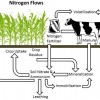 In dairy production systems, nitrogen flows through both the forage crops and the dairy cows. Forage crops use nitrogen mineralized from manure for plant growth. Harvested crops are then fed to dairy cows that, in turn, use the nitrogen for their growth and milk production. When the cows excrete a portion of the consumed nitrogen as manure the cycle is renewed. This 5-page fact sheet focuses on the forage production aspect of the nitrogen cycle at a dairy farm. Written by Rebecca Hellmuth and George Hochmuth, and published by the UF Department of Soil and Water Science, March 2015. (Image credit: R. Hellmuth)
In dairy production systems, nitrogen flows through both the forage crops and the dairy cows. Forage crops use nitrogen mineralized from manure for plant growth. Harvested crops are then fed to dairy cows that, in turn, use the nitrogen for their growth and milk production. When the cows excrete a portion of the consumed nitrogen as manure the cycle is renewed. This 5-page fact sheet focuses on the forage production aspect of the nitrogen cycle at a dairy farm. Written by Rebecca Hellmuth and George Hochmuth, and published by the UF Department of Soil and Water Science, March 2015. (Image credit: R. Hellmuth)
http://edis.ifas.ufl.edu/ss640
